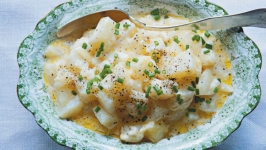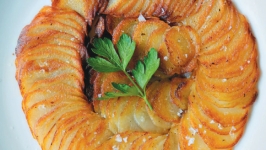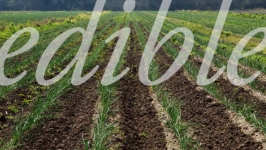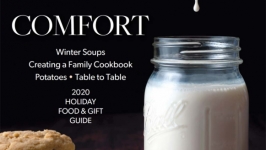The Humble Potato
The season’s crops have been pulled in and are turning into meals that warm and comfort.
While any vegetable can be steamed, roasted, or made into a hearty soup, none is so versatile as the potato—a staple ingredient of winter meals, whose health benefits may surprise you.
Potatoes are a late-season vegetable that get their start in early spring.
“April is the best time to plant potatoes,” says Liam Clifford, of Clifford Family Farm in Pittstown. “Temperatures start to warm up and there is plenty of natural rainfall.”
Clifford explains that potatoes are planted as “seed potatoes,” which are simply potatoes cut into pieces.
“It’s important to make sure there is at least one or two eyes on each piece of seed potato,” he explains. “An eye is a small dimple on the spud where you can sometimes even see a stem beginning to grow out of it.”
Clifford says that while spring is the best time to plant, timing is everything.
“Warmer days and seasonal rainfall are a good thing, but you have to be careful of too much rain because it can cause the seed potatoes to rot,” he says. Harvest time comes much later. “Potatoes are usually ready by the end of July or early August but they need a couple weeks in the ground for their skins to harden and cure. When the potato plants begin to turn yellow and brown, we know it’s time to harvest,” he says.
There are many varieties of potatoes. Some that do well in New Jersey are Dark Red Norland, Kenebec, Katahdin, Elba, Adirondack Red, Adirondack Blue, and Yukon Gold, all of whose taste and textures vary.
“Kenebec potatoes are a good-flavored white-fleshed potato with delicate tan skin. Dark Red Norlands are a small red potato great for roasting. It is also one of the first potatoes ready to harvested, forming tubers in early to mid-July,” notes Clifford, adding among his favorites are fingerling potatoes, which have a delicate skin and creamy texture. “They’re also smaller and require less cooking time,” he says.
When not consumed as fries, chips, hash browns, or other oil-laden goodies, potatoes make a healthy addition to any meal.
“Cooked simply, without an excess of rich ingredients like butter or other dairy, potatoes are a low-calorie food that is high in many nutrients,” says Stephanie Spock, clinical nutritionist at Restoration Nutrition and co-owner of Rolling Hills Farm in Lambertville.
“One potato gives you 10 percent of your daily value of fiber. The high fiber combined with carbohydrates means potatoes are digested slowly and do not spike blood sugar like foods made with sugar or refined grains,” she says, adding that this helps maintain good levels of glucose in the blood, which is necessary for proper brain function. “What’s more, the B6 in potatoes helps create essential brain chemicals, including serotonin, dopamine, and norepinephrine, which is a neurotransmitter,” she says.
When it comes to nutrients, potatoes go more than skin deep.
“It is a myth that the skin contains all the nutrients, though it does have more iron, fiber, and potassium (more than a banana), while the inside of the potato is higher in vitamin C and B vitamins,” she says.
In addition, potatoes help fight free radicals.
“One potato gives you half of your daily value of antioxidant-rich vitamin C,” says Spock, adding that purple potatoes are especially high in both antioxidants and phytonutrients. “Potatoes with colorful skin not only have the benefit of containing different types of antioxidants, they also add a festive touch to any dish,” she says.
Whether roasted as a side dish or scalloped as a main, potatoes make a wonderful addition to a holiday meal, with benefits worth celebrating.












